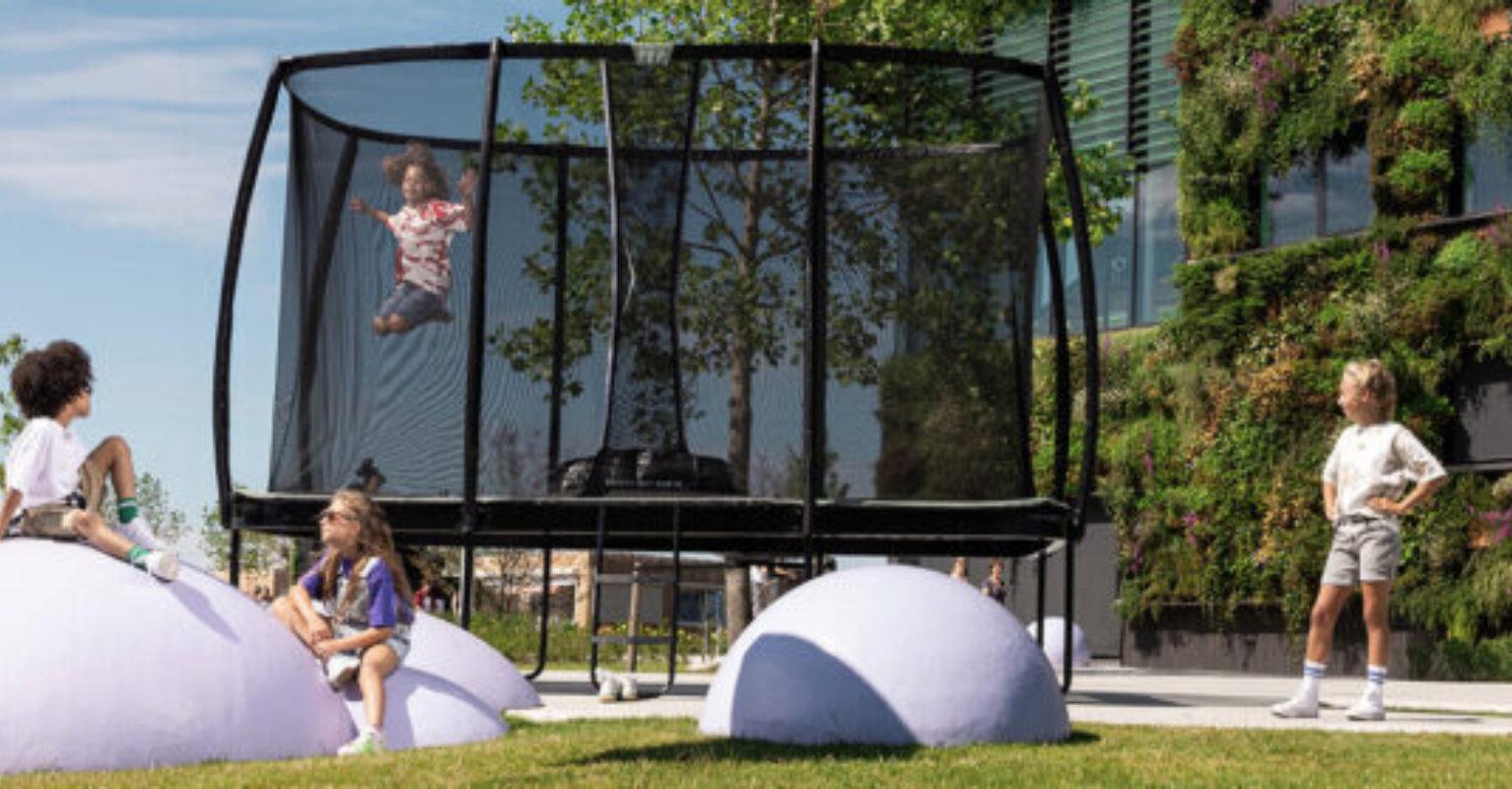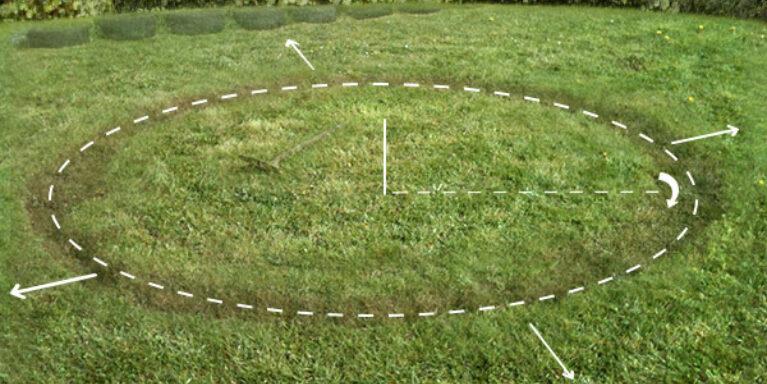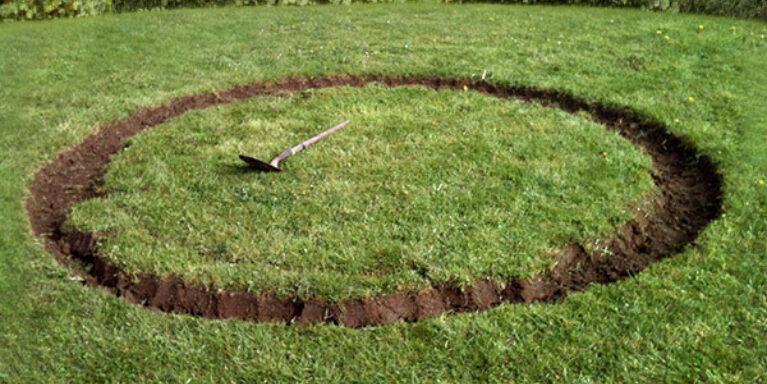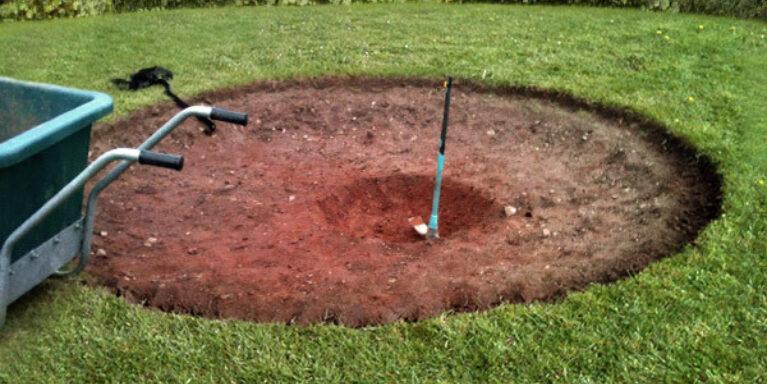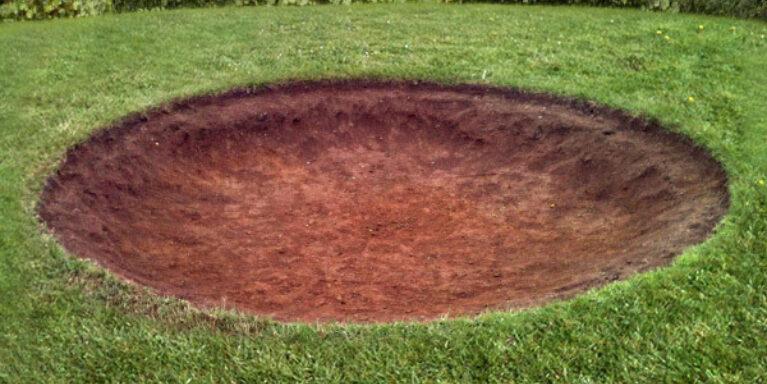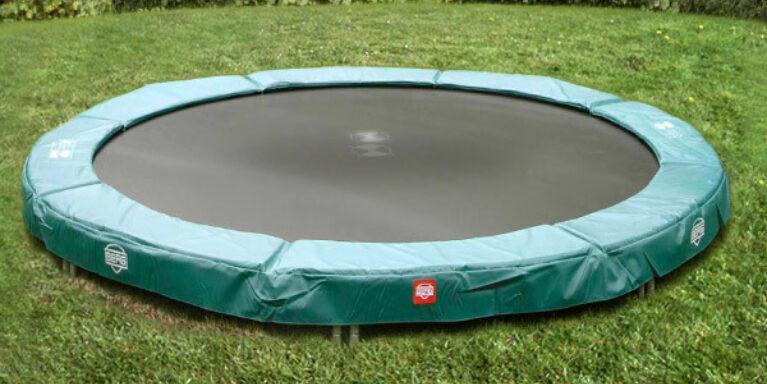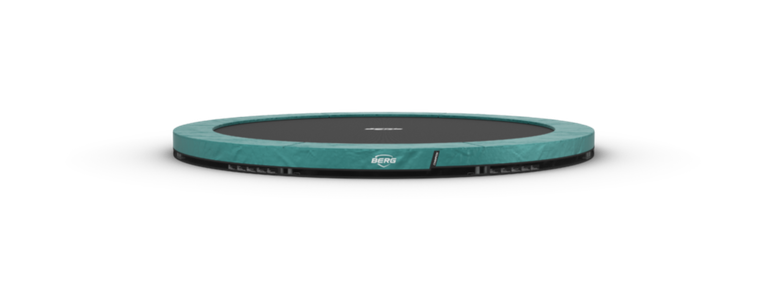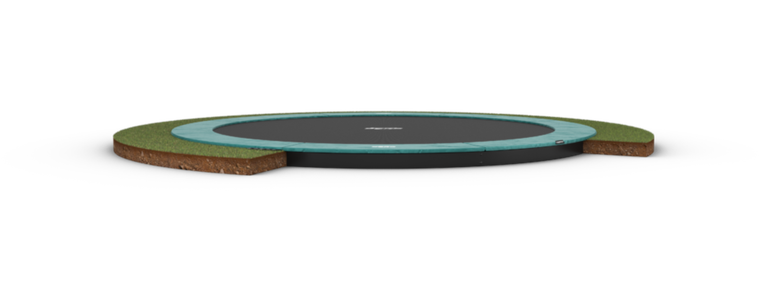How should I dig in my InGround/FlatGround trampoline?
A trampoline that is dug into the ground (also called InGround or underground trampoline) is a trampoline that you can install in the ground. The InGround trampolines can also be subdivided into the BERG InGround and FlatGround trampolines, which will look great in your garden. Because the trampoline is so low or even level with the ground, it is less noticeable. As a result, getting in or out is a lot easier and therefore safer than a trampoline with legs.
A brief summary of the differences between the two types of trampolines: with an InGround trampoline, the frame protrudes slightly above the ground. A FlatGround (Flat to the ground) trampoline can be completely recessed into your garden and will be level with your garden. This allows for very easy and safe access to the trampoline, making it even easier to jump. Thanks to our wide trampoline range, there is an InGround version available in every product line. Should you opt for a FlatGround trampoline, you have the choice between a FlatGround Elite and a FlatGround Champion. View all our FlatGround trampolines here.


